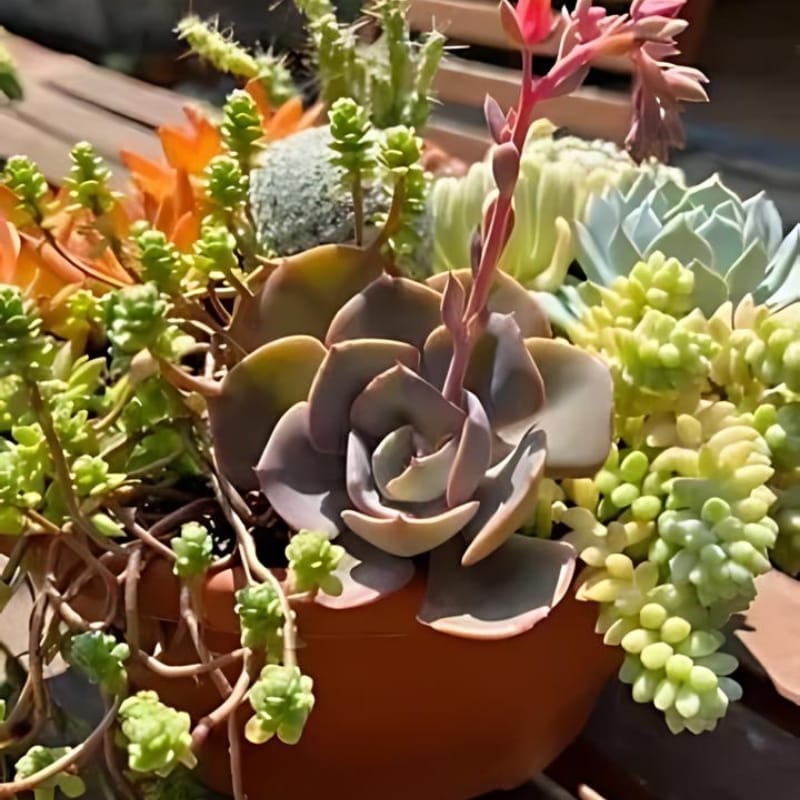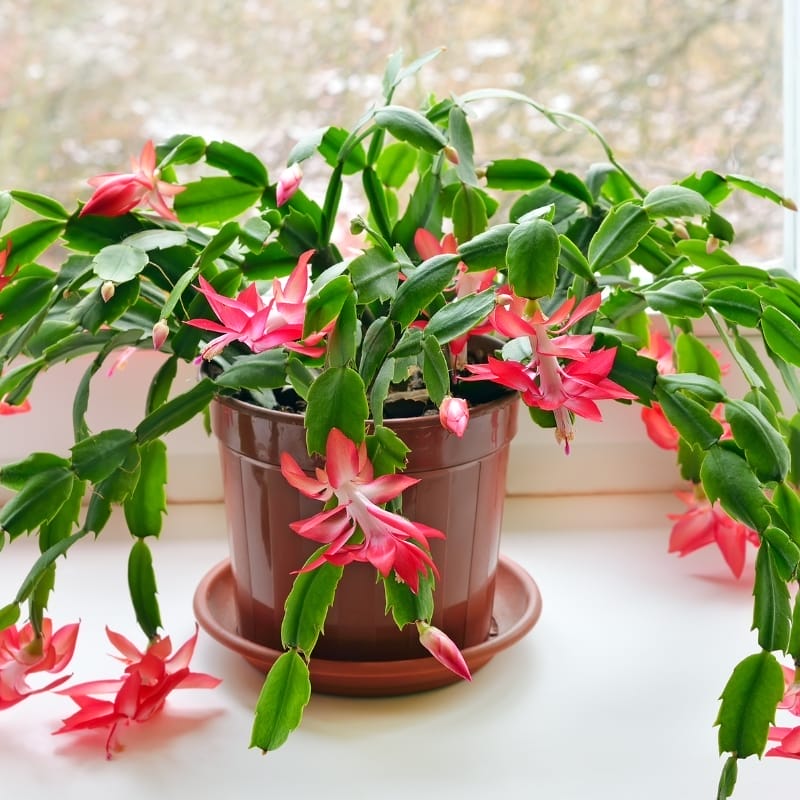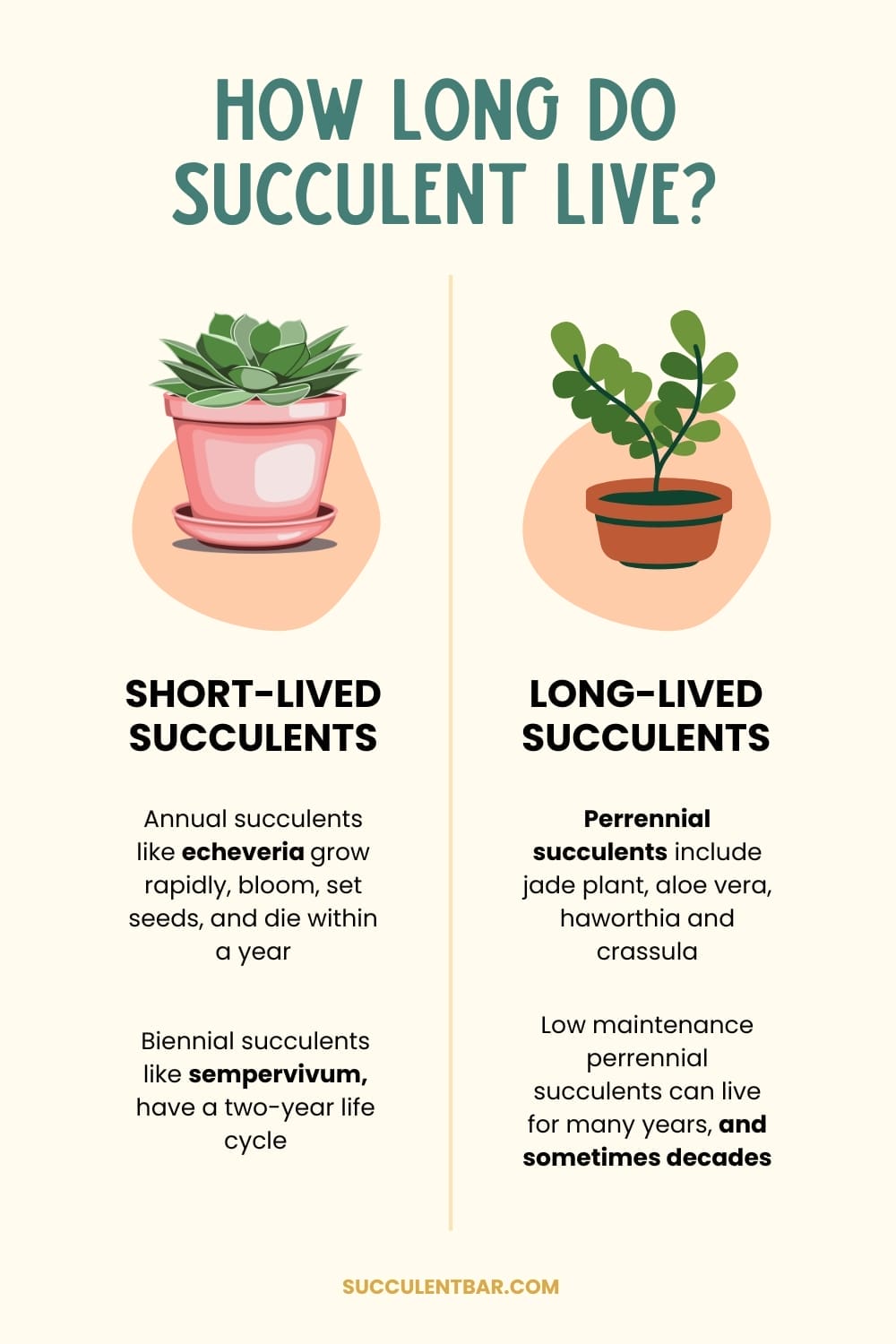If you own a succulent or are thinking about adding one to your garden, indoors or out, you may be wondering, “How long do succulents live?” Knowing how long these beautiful plants live is important for giving them the best care and getting the most out of your gardening experience.
Whether you’ve been taking care of succulents for a long time or are just starting a collection, this complete guide will teach you everything you need to know to make sure your plants live a long and healthy life.
So, prepare to dive in and uncover the secrets behind the captivating lifespans of these unique plants!
Succulents are beloved for their unique shapes, textures, and colors. These drought-tolerant wonders can thrive for years with proper care. But how long do succulents really live? Lifespans vary widely across the over 10,000 diverse succulent species. By understanding what determines longevity and implementing best care practices, you can enjoy your succulents for many years to come.
Factors That Impact Succulent Lifespan
Many elements influence how long succulents survive, including:
-
Genetics – Some succulents are inherently short-lived or monocarpic while others are exceptionally long-lived. Jade plants can survive 100 years but hybrid echeverias may only last 3-5 years.
-
Growing Conditions – Mimicking natural habitat with light, temperature, soil etc. supports longevity. Stress from improper conditions shortens lifespan.
-
Pests/Diseases – Healthy succulents live longer Prevent and treat infestations before they overwhelm plants
-
Propagation – Offsets from rosette-forming succulents essentially rejuvenate the plant. New plants start the lifespan clock anew.
-
Dormancy – Allowing periods of rest enables succulents to conserve energy for future growth. Lack of dormancy causes premature decline.
-
Soil and Roots – Poor drainage and suffocated roots lead to rot and death. Rejuvenate roots and soil periodically.
-
Watering Habits – Overwatering is the #1 killer of succulents. Allow soil to dry between thorough waterings.
-
Sun Exposure – Too much or too little sun stresses plants. Find the ideal middle ground.
-
Fertilization – Strategic fertilizing provides nutrients for growth. Avoid over-fertilizing.
-
Maturity – Some succulents like Aeonium die after flowering. Enjoy them through their natural lifespan.
Average Lifespans of Popular Succulents
To set realistic expectations, here are typical lifespans for common succulent varieties:
-
Jade Plant – 70-100 years
-
Aloe – 12-15 years indoors; up to 30 years outdoors
-
Hens and Chicks – Individual rosettes live 3-6 years but offsets replace them
-
Echeveria – 3-5 years for hybrids; up to 30 years for some species
-
Haworthia – 10-20 years
-
Living Stones – 40-50 years
-
Ponytail Palm – 100 years
-
Christmas Cactus – Over 30 years
-
Snake Plant – 10-15 years indoors; indefinite outdoors in frost-free climates
-
Panda Plant – 3-5 years
-
String of Pearls – 3-5 years
Of course, most succulents can surpass these averages with attentive care. Use these as a baseline when making long-term plans for your collection.
Caring for Succulents Through Their Full Lifespan
You play a major role in determining your succulent’s longevity. Here are tips for caring for succulents from infancy to old age:
Getting Young Succulents Off to a Good Start
-
Allow freshly planted succulents time to establish roots before engaging growth. Don’t fertilize right away.
-
Gradually introduce light intensity to avoid sunburn on tender new leaves and stems.
-
Protect new succulents from temperature extremes that cause shock.
-
Water sparingly until well rooted. Then begin “soak and dry” watering.
Supporting Mature, Growing Succulents
-
Provide appropriate sunlight for the species – bright indirect light for most rosette-types; direct sun for most cacti.
-
Use fast-draining porous potting mix optimized for succulents and cacti. Don’t allow water to pool.
-
During the growing season, water thoroughly as soon as soil dries plus fertilize according to package directions.
-
Monitor for pests like mealybugs and treat early with horticultural oils, insecticidal soap or other remedies.
Caring for Aging Succulents
-
Repot less frequently to avoid disturbing the roots. Focus on replenishing the soil instead.
-
Prune dying leaves/stems to redirect energy toward new growth. Don’t remove more than 20% at once.
-
Propagate aging rosette succulents to produce young offsets before the mother plant expires.
-
Shelter outdoor succulents from harsh weather extremes that become harder to recover from.
Determining When Decline Is Irreversible
-
Wilting and wrinkling that doesn’t respond to watering indicates dead root system. This is often irrecoverable.
-
Rapid loss of leaves coupled with rot points to disease or pest issues beyond treatment.
-
Excessive stretching and weak new growth are signs the plant is fading out. Propagate any healthy leaves/stems.
When decline seems inevitable, the succulent has likely reached its natural end. Focus care on making the plant comfortable in its final season.
Enjoy Every Stage of Your Succulents’ Lives
While succulent lifespans vary, you can maintain most varieties for many years with attentive care. Get to know your plants’ needs, nurture them through each life stage, and propagate when possible. This ensures you can enjoy these delightful plants from young offset to aged specimen.

Popular Succulent Species and Their Lifespans



- Mother plant: A lot of succulents, like Echeveria and Sempervivum, make offsets, or “baby plants,” that grow around the mother plant’s base. The mother plant can live for many years, and the baby plants can be split up and grown into more plants, so there will always be new succulents.
(Fun fact: Echeveria, also known as “Mexican hens and chicks,” get their nickname from their ability to produce numerous offsets, much like a mother hen caring for her chicks.)
- The barrel cactus is a long-living succulent. Some species can live up to 30 years or more. These plants grow slowly, but they are famous for being huge and having a unique barrel shape.
(Fun fact: Barrel cacti are known to lean towards the south as they grow, earning them the nickname “compass cactus.” This natural inclination helps them maximize sun exposure.)
- Another succulent that can live for a long time is the saguaro cactus, which can live up to 150–200 years. It is the largest species of cactus in the United States and a well-known symbol of the American Southwest.
(Fun fact: The saguaro cactus can hold up to 200 gallons of water, which allows it to survive long periods of drought. Its accordion-like pleats expand to store water and contract as the cactus uses the water.)
- Money plant: The money plant, or Crassula ovata, is a well-known succulent with jade-green leaves that look like trees. With the right care, this plant can live for many years, sometimes even 70 to 100 years old.
(Fun fact: The money plant is considered a symbol of good luck and prosperity in many cultures. According to Feng Shui, it is believed to attract positive energy and wealth when placed in the right location.)
- Christmas cactus: The Schlumbergera, or Christmas cactus, is a popular holiday plant that can live for many years if you take good care of it. During the winter, these one-of-a-kind succulents bloom with bright colors.
(Fun fact: Christmas cacti have been known to become family heirlooms, passed down from generation to generation due to their long lifespan. Some have even been reported to live for over 100 years!)
Unveiling the Lifespan of Various Succulent Types

Succulents come in an astounding variety of shapes, sizes, and colors, each with unique charm and characteristics. While some succulents have relatively short lifespans, others can thrive for many years with proper care.
This part will talk about the difference between succulents that live a short time and those that live a long time. It will do this by giving you examples and information about their average lifespans to help you learn more about the wide range of these beautiful plants.
HOW LONG WILL YOUR SUCCULENTS LIVE? | HOW TO EXTEND YOUR SUCCULENT LIFESPAN
FAQ
How long do indoor succulents last?
How often do I water succulents?
Do succulents ever stop growing?
How long do succulents live?
Some succulents, like Chicks and Hens, have a relatively short lifespan of around 3-4 years. However, they regenerate themselves by sending out offsets. Monocarpic succulents, such as aeonium kiwi, die after flowering. In the case of Chicks and Hens, you may not even notice the main plant’s death due to the numerous offsets that take its place.
Do succulents live longer than hybrid plants?
Such succulents live for shorter periods as compared to the less complex ones. So it’s simple – if you want a succulent that will live as long as possible, no hybrids. Succulents generally need less water, light, and specific ranges of temperatures to thrive well.
Can succulents survive without soil?
Succulents can survive for long periods without soil. They can be grown in water or in a hydroponic system. The plant’s roots will absorb all of the nutrients and moisture that they need from the water. This can be an excellent option for those who want to have low-maintenance plants.
Can succulents live in water?
Succulents can live in water as long as they have a suitable container. However, it’s important to note that water roots and soil roots are very different from each other. A succulent that has adapted to living in water will most probably die if transplanted into soil.
Do succulents grow slowly?
The majority of succulents grow slowly. They cycle between dormancy and a growing season each year. Plant dormancy is similar to hibernation in animals. During a certain season, succulents go into survival mode to make it through extreme weather conditions.
Do succulents go dormant?
Succulents go into survival mode and slow or stop their growth during certain seasons to conserve energy, a process called dormancy. This helps them make it through extreme weather conditions. Indoor succulents may not go dormant if the temperature doesn’t change.
- The Ultimate Guide to Growing Strawberries in Raised Beds - August 8, 2025
- No-Dig Garden Beds: The Easiest Way to Grow a Beautiful Garden - August 6, 2025
- How to Protect and Preserve Wood for Raised Garden Beds - August 6, 2025
